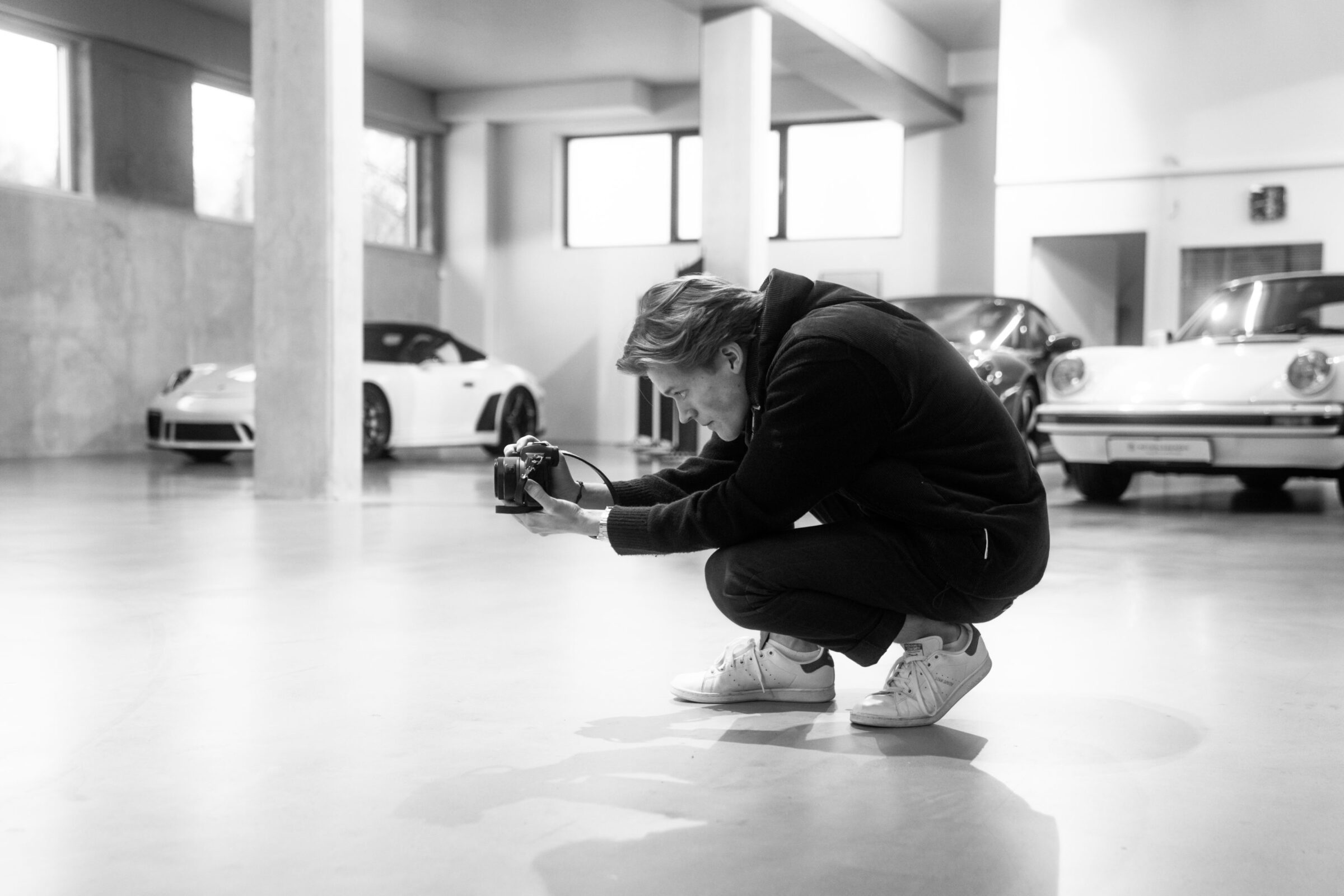Bugatti – Start of the Schlumpf Collection
Among car fans, the Cité de l’Automobile in Mulhouse/Alsace, is a worldwide well-known place. The nickname of this car museum refers to its founders: Collection Schlumpf. But how did this huge collection of vintage and classic cars come about? Let us go on a journey of discovery together. This begins as early as 1928, when Fritz Schlumpf acquired his first Bugatti at the age of 22. As he regularly moved the car in motorsport events, he soon needed spare parts and thus came into closer contact with the brand itself, which he maintained until after World War 2. His preference for products from Molsheim was awakened. In everyday life Fritz Schlumpf worked in his own company as a broker for wool, which his brother Hans, two years older than him, joined in 1929. Together they founded SAIL (Société Anonyme pour l’Industrie Lainière) in 1935 as a public limited company trading in wool. After the end of the war, they bought up more and more wool factories and spinning mills in Alsace, until SAIL held a quasi-monopoly in Eastern France. Among these acquired factories was a disused wool factory in Mulhouse, which they bought in 1957. They wanted to use this building to create their own car museum. In the meantime, both brothers had already started to buy pre-war classic cars.
The Schlumpf brothers multiplied this desire to buy old cars from the beginning of the 1960s onwards. Fritz Schlumpf wrote letters to numerous owners of Bugatti vehicles, whose addresses he obtained from a register by Hugh Conway of the British Bugatti Owners Club. Among the car owners he contacted was the American John W. Shakespeare from Hoffman/Illinois, whose private collection at the time included four Type 55, one Type 56, twelve Type 57, one Type 41 Royale and around 22 other Bugatti of various model series. Thus, he probably owned the largest Bugatti collection worldwide at that time. Obsessed, as Fritz Schlumpf was, he offered John Shakespeare a lump sum of US$ 70,000 for his entire fleet of cars to add to his own collection in Alsace. Shakespeare, however, demanded at least US$ 105,000 in return. This high price allowed the Schlumpf brothers to have an independent inspection of the vehicles carried out by the Bugatti expert Bob Shaw from Illinois. He came to the unflattering conclusion, however: “Most of the cars are in a part of the building with a dirty floor, broken windows, leaking roof and nesting birds. Every car is in some state of dismantling and none of them have run for at least 18 months,” and strongly advises against buying them.
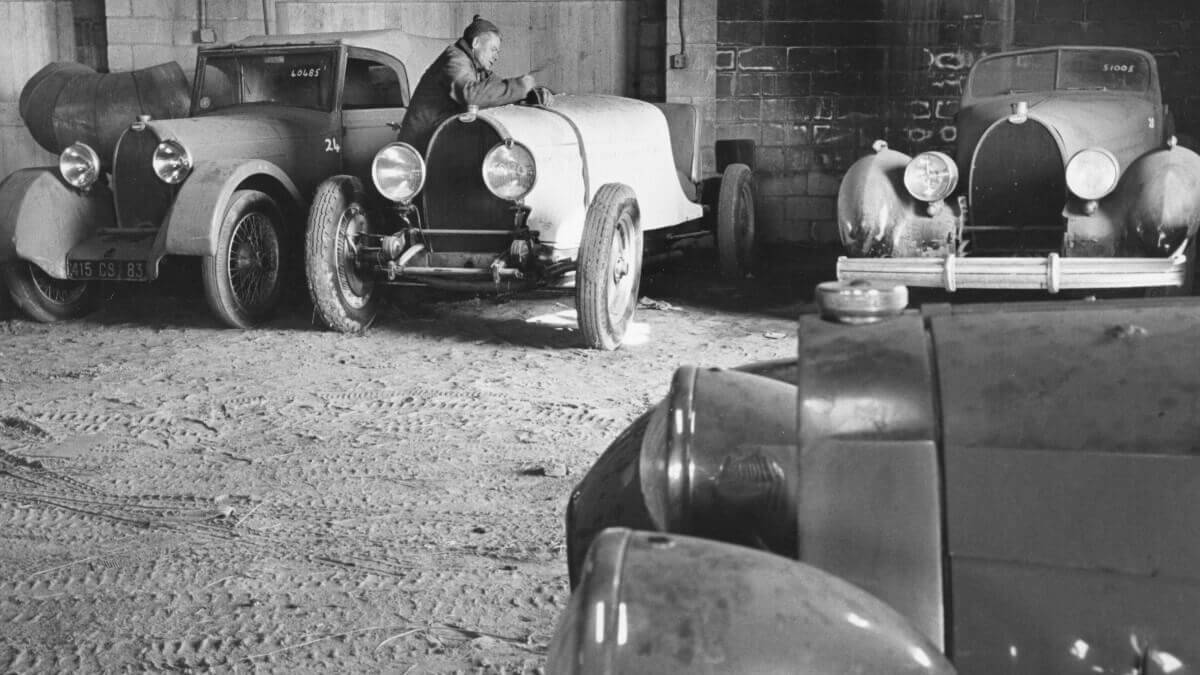







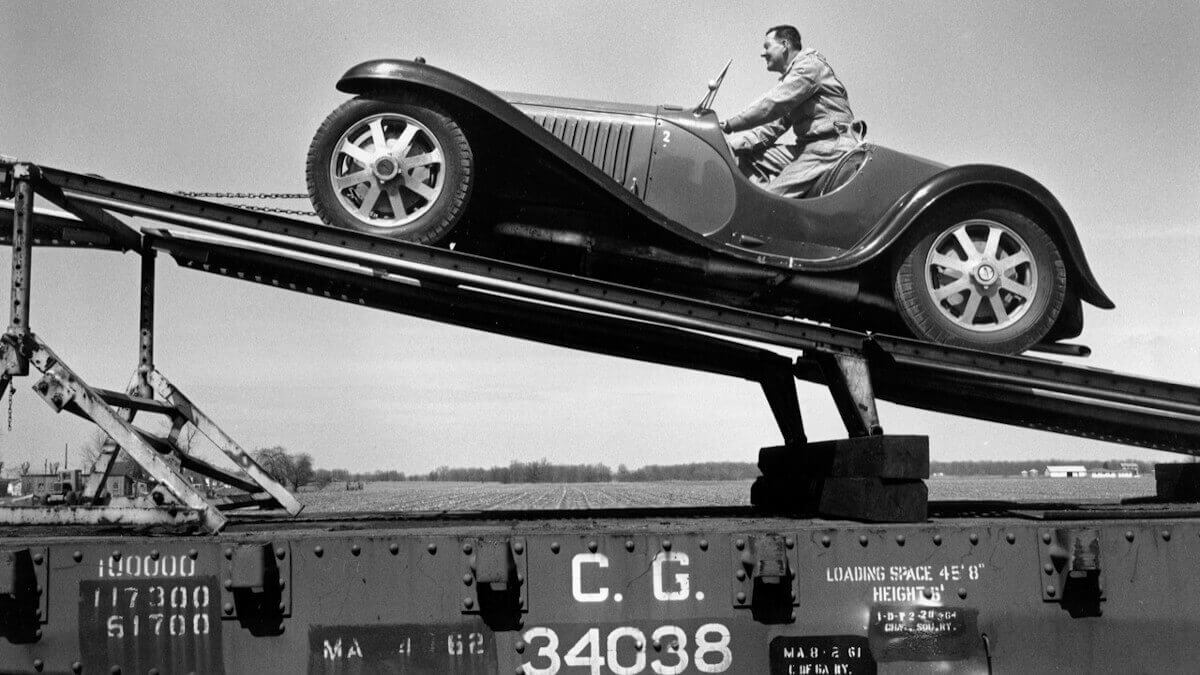







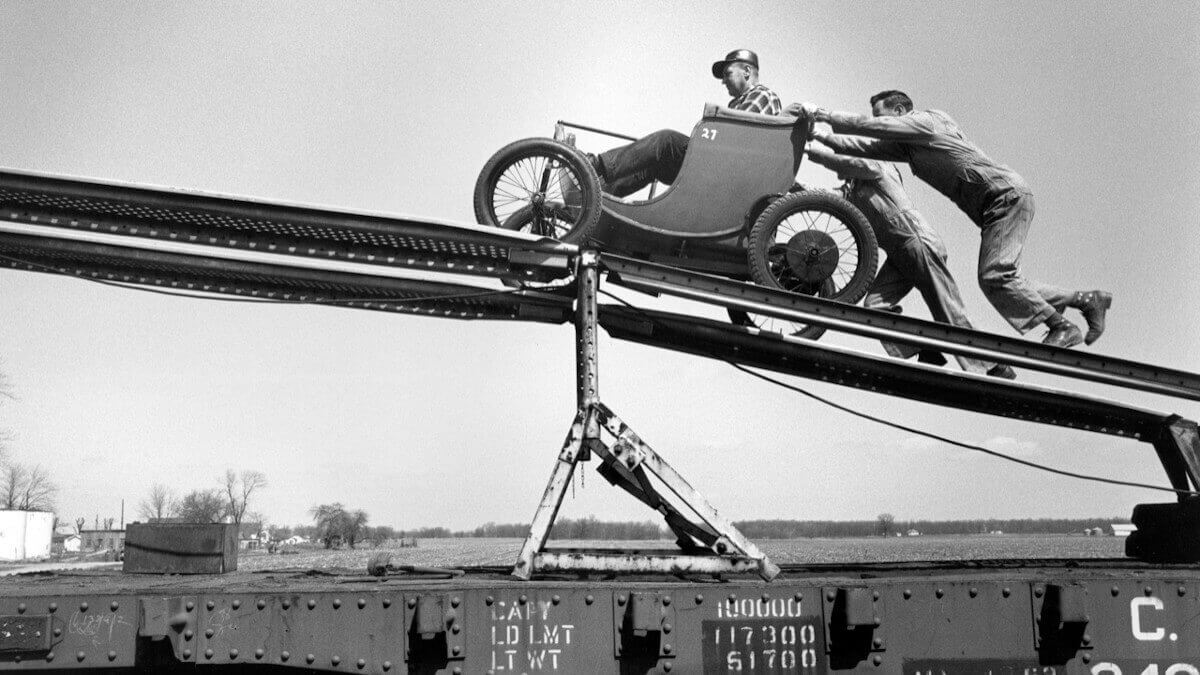







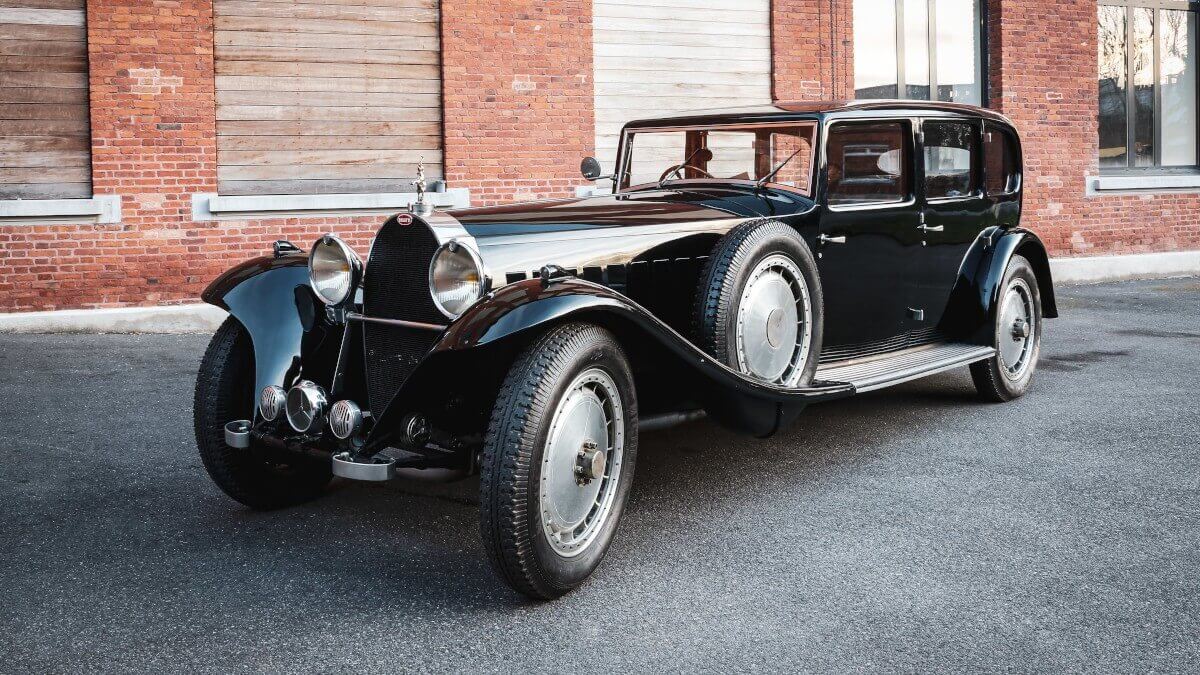



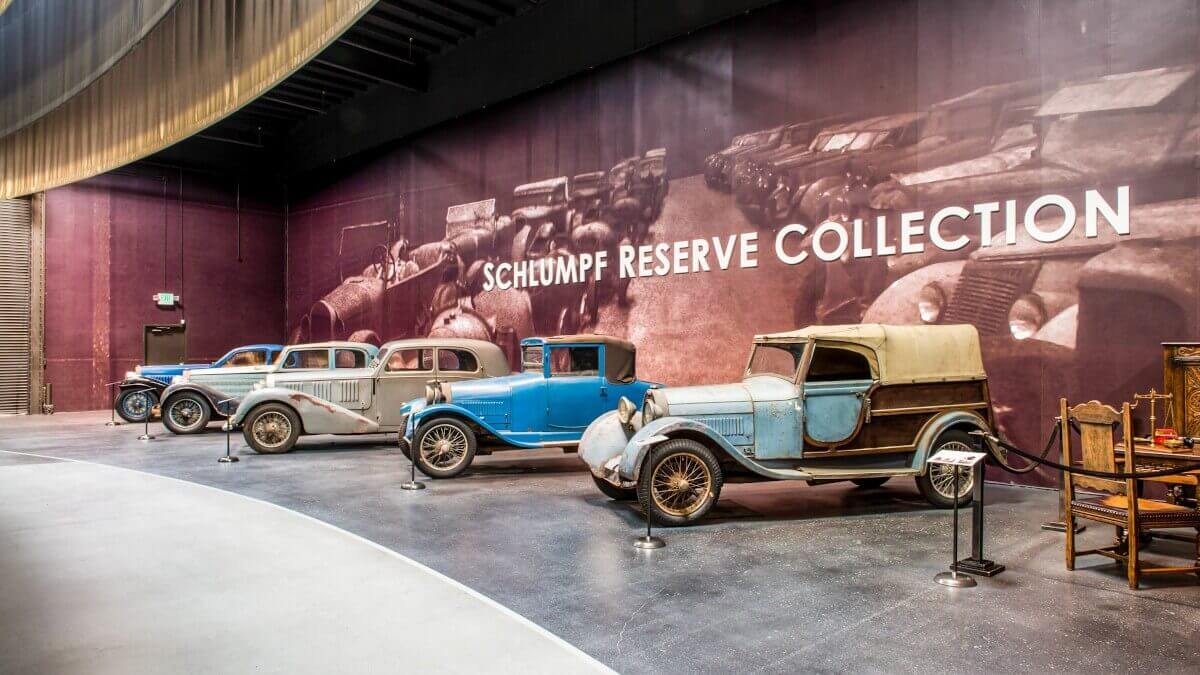







Schlumpf, on the other hand, was now offering US$ 80,000. This was followed by a phase of tough negotiations, threats between the two parties and even attempted blackmail, but finally, about a year later, at a price of US$ 85,000 including transport costs to France, a sales contract was reached. What sounds like little money would be, with inflation taken into account, about US$ 720,000 today, which is still a relatively small sum for 30 Bugatti vehicles. At that time, however, many experts considered them to be pure used cars in unroadworthy condition. On March 30, 1964, the entire fleet of Bugatti cars was loaded onto a car train of the Southern Railway company with destination New Orleans. It was indeed an open train, as various historical photos in our picture gallery prove. From the wagons, the journey then continued on a Dutch cargo ship, which reached the port of Le Havre in France a few weeks later. There Fritz Schlumpf took delivery of the cars and transferred them to his planned museum.
Although the Schlumpf brothers announced their collection in a small press release in 1965, had the factory halls extensively rebuilt and many vehicles already restored, the planned museum was never opened. Both of them collected more rare cars and became themselves the ones with the largest Bugatti collection of all time. But the decline of the French textile industry combined with their sometimes unpopular business practices led to more and more strikes in the 1970s. In the end, the brothers had little choice but to flee to Switzerland. They had to leave their car collection behind in Alsace, where it was found by the angry workers in 1977 in search of the Schlumpf brothers and valuables. Fortunately they recognized the historical value of these cars and saved them from damage. In total, the workers found more than 400 vehicles, of which more than 100 bore the Bugatti brand logo. Among them were the electric car Type 56, two of only six Type 41 Royale ever built and two Type 101 from the brand’s short post-war episode. Actually, all the cars should have been sold to satisfy the claims of creditors and workers. In the end, however, a consortium consisting of the City of Mulhouse, the Haut-Rhin Departmental Council, the Alsace Regional Council, the Mulhouse Chamber of Commerce and Industry, the Automobile Club de France, the Committee of the Mondial de l’Automobile and the car manufacturer Panhard & Levassor (today part of the PSA Group) joined forces to acquire the entire collection for 44 million francs. Finally, on 10 July 1982, the Cité de l’Automobile – Collection Schlumpf opened its doors as France’s national car museum. The vast majority of the Schlumpf collection can now be seen on over 25,000 square meters. Currently five unrestored Bugatti vehicles are on loan to the Mullin Automotive Museum in Oxnard, California.
Images: Bugatti, David Gulick




